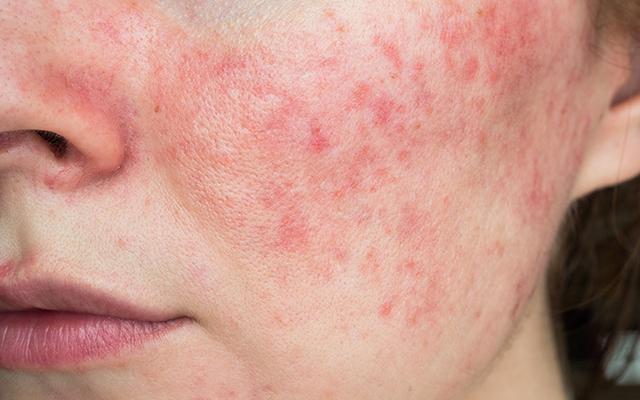
ACNE VARIENTS
- October 8, 2021
- Posted by Dr. Vaidya Karanvir Singh
- 0 Comment(s)
Table of Contents
DESCRIPTION
- Acne also known as acne vulgaris caused by multiple factors.
- Overproduction of a sebum that is skin natural oil increase under the influence of hormones.
- This pair with shedding of exfoliating dead skin cells and plugs hair follicles.
- The plug follicle become inflamed increased the growth of normal skin bacteria.
- Medications such as, lithium, iodides, cortisone hormones, seizure medications or isoniazid can cause acne lesions.
- There is no cure for acne, but certain measures prevent more breakouts. Acne can result in scarring that so minimizing breakouts is important.
ACNE VARIANTS
Childhood acne – childhood acne may be of three type:
- Neonatal acne
- Infantile acne
- Early onset acne vulgaris.
Neonatal acne – This is very common usually involves open and closed comedones, or some papules and pustules.
- The development appears to be related to hormonal activity in utero and will resolve spontaneously 12-13 months after delivery without scarring.
- No specific treatment is required except reassurance for parents.
Infantile acne – This usually develop at the age of 3-6 months.
- They may be more extensive and inflammatory and does require treatment.
- It may resolve spontaneously or persist.
Early onset Acne Vulgaris – In acne susceptible families, lesions start to become more from the age of 6 to 7 years and persist throughout adulthood.
- Inflammation usually occurs at puberty may precede several years.
- Inflammatory acne in children should warn underlying disorder.
Follicular Occlusion Triad – This includes three variants, one or more may be present in individual patients. All these represent inflammatory form of acne which consist of:
- acne conglobata,
- hidradenitis suppurativa,
- Dissecting cellulitis.
Acne conglobate – This is a very serious form of inflammatory acne that is characterized by large cysts, large interconnecting comedones, draining abscesses and sinus tract formation.
- Extreme scarring is common and difficult to prevent.
- Aggressive treatment is essential.
Hidradenitis suppurativa – This is chronic inflammatory variant.
- Major area affected are the axillae, groin, and perianal skin.
- The lesions are deep cysts, nodules and form sinus tract.
- Scarring is common and secondary infection occur.
Dissecting cellulitis of the scalp – nodules, cysts, and interconnected sinuses are present.
- The scalp may be accompanied by scarring and irreversible hair loss.
- Secondary infection is common.
- Aggressive treatment is required.
SIGNS AND SYMPTOMS
- Acne results in a variety of lesions.
- The most common acne locations include the face, neck, chest, and back, where sebaceous glands are located.
- Blackheads and whiteheads are follicular plugs that are either sitting below the skin surface known as whitehead or being exposed to the air known as blackhead.
- Papules are pink to reddish-brown bumps that is small in size.
- Pustules are pus-filled lesions,
- Nodules are deeper pus-filled lesions.
- Mild acne is consists of few papules/pustules and/or comedones.
- Moderate acne increased the number of lesions.
- Severe acne may include whiteheads, blackheads, papules, pustules, and may have painful nodules.
- Acne can result in permanented scars, which can appear to be depressions in the skin, dark red or brown flat marks where the acne lesions were.
FOUR GRADES OF ACNE
- Grade 1: Comedones, occasional papules.
- Grade 2: Papules, comedones, few pustules.
- Grade 3: Predominant pustules, nodules, abscesses.
- Grade 4: Mainly cysts, abscesses, widespread scarring.
ACNE TYPE
Clogged pores cause acne. These may be attributed to:
- Excess production of oil (sebum)
- Bacteria
- Hormones
- Dead skin cells
- Ingrown hairs
- Acne is usually associated with hormonal fluctuations mostly experienced during teenage but adults can experience acne. Acne may be non-inflammatory or inflammatory. Subtypes of acne within these two categories include:
- Blackhead
- Whiteheads
- Papules
- Pustules
- Nodules
- Cysts
SELF CARE GUIDELINE
- Traditional treatments can help to prevent acne.
- Wash acne prone areas with gentle soaps or cleansers.
- Avoid skin irritants such as rubbing, abrasive scrubs and greasy products.
- Water-based or noncomedogenic based products will help to reduce clogged pores.
- There are also a variety of over-the-counter medications that may help to reduce the pimples, should be applied in a thin layer to the entire skin area on a regular basis improve acne but complete results seen after a few months.

Dr. Vaidya Karanvir Singh is the younger Vaidya in Chandigarh Ayurved & Panchakarma Centre. He is the fourth generation in his family who is practicing as a general consultant in Ayurved & Panchakarma treatment at Chandigarh. In his practice, he had treated more than 1 Lakh Plus patients worldwide.

